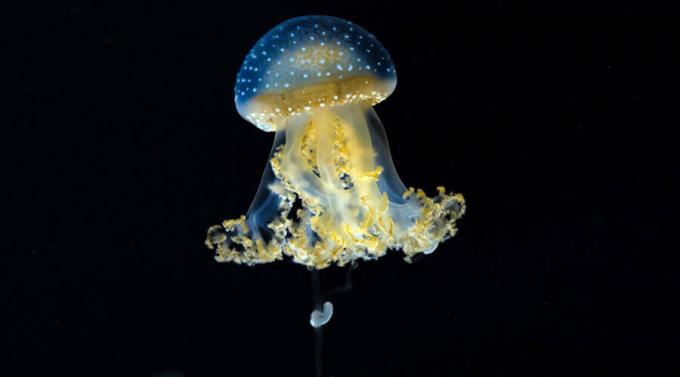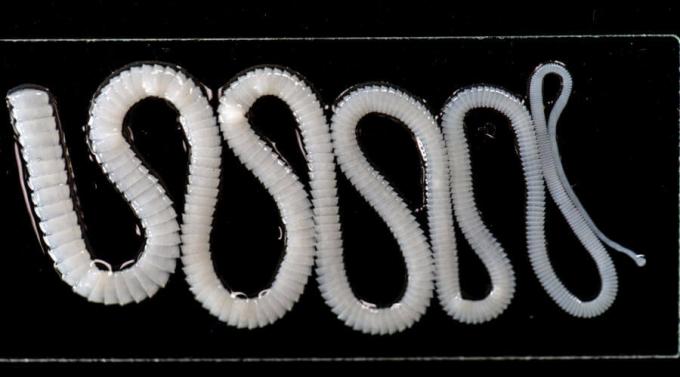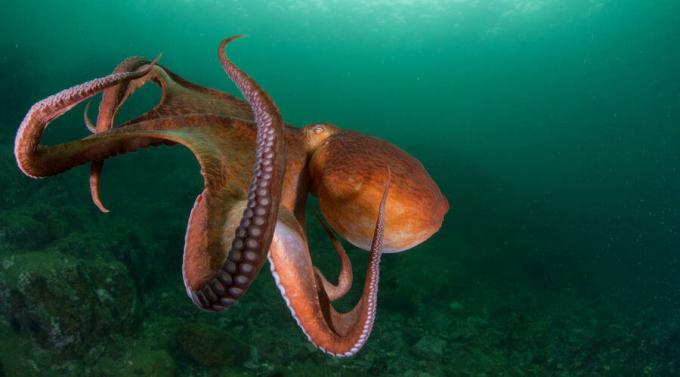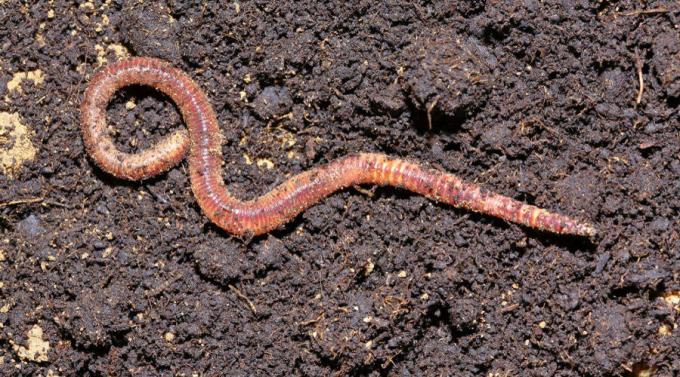You invertebrate animals are those animals that do not have a backbone and skull.It is noteworthy that the classification of animals into vertebrates and invertebrates is completely artificial, since just one trait is not enough to classify the entire kingdom into just two groups.
Invertebrates are complexes and many are more related to vertebrates than to other invertebrates. Below, we will better portray the groups that can be classified as such.
→ Characteristics
Invertebrates are a large group that represents the most animals found on our planet. They have many differences between them, but some common characteristics can be observed. They are common features to all invertebrates:
Absence of spine and skull.
cell of type eukaryotic, that is, their cells have a nucleus delimited by the nuclear membrane.
Nutrition heterotrophic, that is, everyone needs to feed on other living beings, not being able to produce their own food.
They are multicellular, that is, all invertebrates are made up of more than one cell. It is noteworthy that most have tissues and organs, but this feature is absent in porifers.
→ groups
The invertebrates are divided in approximately, 33 different phyla. However, in most textbooks, we observe the reference of only eight of them. You eight strands of invertebrates most studied they are:
Porifers: are also known as sponges and stand out for having a pore-rich body. the porifers are sessile animals as adults and feed through filtration (They remove food particles from the water when it passes through your body). In these animals, the presence of true tissues is not verified. To learn more about this topic, read our text: porifers.

Sponges have a body full of pores.
-
Cnidarians: are a group of animals that live in the aquatic environment. The body of these species presents radial symmetry, and its gastrovascular cavity has only one opening, which functions for the entry of food and the exit of waste.
Two variations in the body plane can be observed in these animals: polyps and jellyfish. In these animals the presence of cells specialized in the elimination of stinging substances, calls cnidocytes. To learn more about the topic, read our text: Cnidarian phylum.

Jellyfish have cells that release stinging substances.
Platyhelminths: have flat bodydorsoventrally flat, being known, due to this characteristic, as flattened worms. They are found in different habitats, with species of free life and also species parasites. If you are interested in the topic, access our text: the flatworms.

The tapeworm is a flatworm that can parasitize humans.
-
Nematodes: are animals found in various environments, despite being known mainly for the parasitic species. These animals have fusiform body (elongated with narrower ends) and have a cuticle that covers the entire body. Learn more about these animals by reading our text: Phylum nematode.

Roundworm is a parasite that causes a disease known as ascariasis.
Know more:ascariasis
Molluscs: are animals of soft body and the second largest group of animals in number of described species. Some representatives have shell rich in calcium carbonate coating and protecting your body. Most of its representatives are navy. Want to know more about these animals? Read our text: molluscs.

Octopuses are shellfish that do not have a shell.
Annelids: as the name suggests, feature body divided into rings. They occupy different habitats, being found individuals in freshwater, saltwater and moist soil. Are you more interested in this topic? Access our text: philo annelida.

Earthworms are annelids that make the soil more airy due to the formation of tunnels.
Know more:earthworms
-
Arthropods: represent the group with greater diversity of known species. the presence of a exoskeleton and articulated appendages is a striking feature in these animals.
The exoskeleton is rich in chitin and help in animal protection. For being rigid, prevents growth, causing the animal to regularly change this external skeleton. If you are more curious about these animals, read our text: arthropods.

Spiders can be dangerous, some being responsible for serious accidents.
Know more:spiders
Echinoderms: are marine animals that have a endoskeleton formed by rigid limestone plates. They have a system formed by a network of hydraulic channels that branch out forming the so-called ambulatory feet. It is these feet that guarantee the movement of these animals. Learn more about them by reading our text: echinoderms.

The sea urchin has spines that can cause accidents if a person steps on it..
Read too:coral bleaching
→ Examples
The table below shows examples of invertebrates and the group to which they belong:
Group |
Examples |
porifers |
sponges |
Cnidarians |
Anemones, hydras and jellyfish |
platyhelminths |
Tapeworms, schistosome and planarians |
Nematodes |
roundworm and pinworms |
molluscs |
Octopuses, squid, oysters, slugs and snails |
annelids |
earthworm and leech |
arthropods |
Spider, Scorpion, fly, lobster, shrimp and tick |
echinoderms |
Sea urchins, starfish and beach biscuits |
→ Where they live
Invertebrates are found in the most varied environments, it is not possible to describe just one habitat for these species. We find them, for example, in the environment marine and freshwater and in the environment terrestrial. There are also species that live in the bodies of other animals, these being called parasites. As an example of parasitic invertebrates, we can mention the tapeworm and the roundworm, which cause, respectively, taeniasis and ascariasis.
Read too: The curious case of cancer formed by tapeworm cells
→ aquatic
Invertebrate animals can occupy different habitats, the aquatic one being one of them. There are species that live in fresh water and also in salt and brackish water. They are examples of aquatic invertebrate animals:
Jellyfish
sea anemone
sponges
Hydra
Lobster
squid
Shellfish
sea urchins
Planarians
Octopuses
Read more about: types of water
→ terrestrial
Invertebrate animals can also occupy terrestrial habitat. They are examples of terrestrial invertebrate animals:
Bee
Spider
Butterfly
Termite
Scorpion
ant
Centipede
earthworm
Fly
snake lice
Read too: Transgenic Dengue Mosquito
→ Curiosities

Squid is an animal used for food.
Invertebrates correspond to approximately 95% of the species of animals existing on our planet.
The giant squid (Architeuthis dux) is considered the largest invertebrate and can reach 18 meters in length.
The Australian giant earthworm can reach up to three meters in length.
Sponges were mistaken by the Greeks for plants.
The leeches (annelids) were used for a long time, in medicine, in bloodletting - a technique that consists in taking a certain amount of blood for the treatment of diseases.
The bird-eating goliath spider (Theraposa blondi) is the largest spider in the world and can have legs of about 30 centimeters.
The jellyfish of the species Turritopsis nutricula is able to rejuvenate itself.
A tapeworm can shed up to 700,000 eggs a day.
An ant carries, on average, 50 times its weight.
A flea can jump about 50 cm high.
The fish tapeworm (genus Diphyllobothrium) can live up to 25 years of age.
By Ma. Vanessa Sardinha dos Santos



